 It is that time of the year again when families and friends gather together for the highly anticipated Thanksgiving Day holiday. Most people do not think about how Thanksgiving may affect one’s allergies, however, the holiday is full of potential triggers for many individuals prone to various allergies.
It is that time of the year again when families and friends gather together for the highly anticipated Thanksgiving Day holiday. Most people do not think about how Thanksgiving may affect one’s allergies, however, the holiday is full of potential triggers for many individuals prone to various allergies.
The most obvious allergies in relationship to Thanksgiving would be food allergies. This relationship stems from the fact that when the average person thinks of Thanksgiving, they immediately associate the holiday with food and gluttony. There are individuals who are allergic to turkey, the staple food of Thanksgiving, but turkey allergy is not very common. More commonly, many individuals will experience sleepiness after eating turkey meat. This phenomenon is explained due to the fact that turkey contains higher levels of the amino acid “L-tryptophan.” L-tryptophan will enter the bloodstream from the digestive tract and travel to the brain where it gets converted to the chemical “serotonin.” It is the serotonin that is responsible for causing this sleepiness. In addition to turkey which helps fill the plates on a Thanksgiving Day dinner, there are lots of other foods that accompany this holiday favorite. Common food allergens such as wheat, soy, egg, milk, nuts, and peanuts are often found around the table. Gravy used for turkey and mashed potatoes frequently contains soy, wheat, and/or dairy. Nuts are commonly found on string beans and in some types of stuffing. Nuts and peanuts are common in many desserts such as pecan pie and brownies. Eggs and milk (dairy) are also used in many baked goods. Although pumpkin allergies are not common, pumpkin pie may contain an array of ingredients that may trigger a food allergy in susceptible individuals. It is also important to note that among various cultures, many families incorporate many ethnic foods in their celebrations. These foods may not be traditional but they increase the likelihood of other allergenic foods such as fish, shellfish, etc. to be the causative agent of an impending food allergy. If someone has a serious food allergy, it is advisable for that person to bring their own food.
In addition to food allergies, one always is exposed to the typical environmental allergens such as dust mites, pets, molds, and to a lesser extent pollens. By Thanksgiving, the pollen count in most places in the U.S. is low or non-existent, except in the southern states. It is the molds, dust mites, and pets that tend to bother individuals during the end of November in the Washington, DC, Northern Virginia, and Maryland metropolitan area. These allergens can cause the typical symptoms of hay fever (I.e., allergic rhinitis and/or allergic conjunctivitis) and/or asthma which may include runny nose, nasal congestion, post-nasal drip, sneezing, itchy nose, itchy throat, sinus headaches, itchy eyes, watery eyes, redness of the eyes, wheezing, coughing, chest tightness, and shortness of breath. One must keep in mind that many of these symptoms may mimic the symptoms of the common cold or flu (i.e., influenza) which tend to become more prevalent during this time of the year.
Other irritants that can cause allergic-like symptoms at a Thanksgiving Day event may include perfumes, colognes, cigarette smoke, smoke from a fireplace or wood-burning oven, and cleaning fluids. Unfamiliar soaps may cause contact dermatitis to individuals with eczema (i.e., atopic dermatitis) and sensitive skin.
Thanksgiving is a festive time and loved by almost everyone. It is a time to congregate with family and friends and an excuse to eat too much! Given the positives about the Thanksgiving holiday, it is crucial to remember that there can be potentially serious complications from this seemly innocuous occasion. With this in mind, have a very happy Thanksgiving!
The board certified allergists at Black & Kletz Allergy have been diagnosing and treating allergies, asthma, sinus conditions, and immunological disorders for more than 50 years. Black & Kletz Allergy has 3 convenient locations in the Washington, DC metro area with offices in Washington, DC, McLean, VA (Tysons Corner, VA), and Manassas, VA. We offer on-site parking at each location and the Washington, DC and McLean offices are Metro accessible. There is a free shuttle that runs between our McLean, VA office and the Spring Hill metro station on the silver line. Please call us today to make an appointment at the office of your choice. Alternatively, you can click Request an Appointment and we will respond within 24 hours by the next business day. The allergy specialists at Black & Kletz Allergy pride themselves in delivering the highest quality allergy care in the Washington, DC metropolitan area in conjunction with providing excellent customer service in a friendly and affable environment.


 Adverse reactions to medications are very common. Among the drugs associated with immediate hypersensitivity reactions (i.e., Type I allergy, IgE antibody-mediated allergy), penicillins are the most commonly observed.
Adverse reactions to medications are very common. Among the drugs associated with immediate hypersensitivity reactions (i.e., Type I allergy, IgE antibody-mediated allergy), penicillins are the most commonly observed.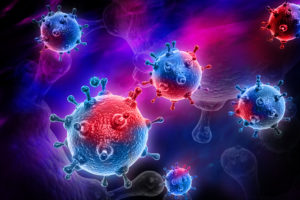 “Flu” season is almost here and it is time to get prepared for its onslaught.
“Flu” season is almost here and it is time to get prepared for its onslaught. Halloween is just around the corner and most individuals do not think of allergies when thinking of Halloween. They more aptly think of costumes, trick-or-treating, candy, bobbing for apples, skeletons and skulls, and Halloween parties. It is a festive time of the year and both adults and children enjoy the holiday. Even though adults enjoy the event, it is the children that really become excited!
Halloween is just around the corner and most individuals do not think of allergies when thinking of Halloween. They more aptly think of costumes, trick-or-treating, candy, bobbing for apples, skeletons and skulls, and Halloween parties. It is a festive time of the year and both adults and children enjoy the holiday. Even though adults enjoy the event, it is the children that really become excited!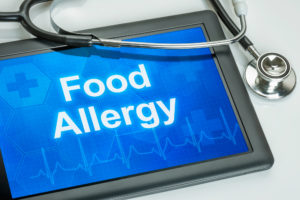 The most common type of food allergy is an “immediate hypersensitivity” reaction (i.e., Type I reaction), where the symptoms usually begin within a few minutes of exposure to the offending food. These reactions are mediated by an antibody called IgE which interacts with the protein (i.e., antigen, allergen) in the food. This interaction causes a release of chemicals which are responsible for the undesirable allergic symptoms. The most common foods that cause these types of reactions are nuts and shellfish, though any food can theoretically trigger IgE.
The most common type of food allergy is an “immediate hypersensitivity” reaction (i.e., Type I reaction), where the symptoms usually begin within a few minutes of exposure to the offending food. These reactions are mediated by an antibody called IgE which interacts with the protein (i.e., antigen, allergen) in the food. This interaction causes a release of chemicals which are responsible for the undesirable allergic symptoms. The most common foods that cause these types of reactions are nuts and shellfish, though any food can theoretically trigger IgE. Recurrent infections occur in many individuals in the U.S., as well as around the world. In the U.S., malnutrition is not a common cause as it is in many undeveloped third-world countries. Parasitic infections are also not very common in the U.S. unless an individual travels to a developing country, consumes uncooked meat/fish, drinks tainted water, or has an immune deficiency. The most common types of infections found in the U.S. are numerous and include
Recurrent infections occur in many individuals in the U.S., as well as around the world. In the U.S., malnutrition is not a common cause as it is in many undeveloped third-world countries. Parasitic infections are also not very common in the U.S. unless an individual travels to a developing country, consumes uncooked meat/fish, drinks tainted water, or has an immune deficiency. The most common types of infections found in the U.S. are numerous and include 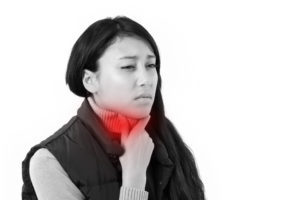 Definition:
Definition: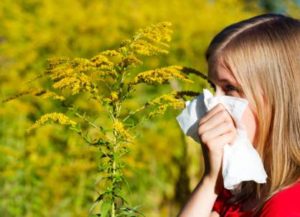 It is August in the Washington, DC metropolitan area and to many allergy sufferers, that means ragweed pollen is in the air. Ragweed is a flowering plant that releases its pollen into the air in the
It is August in the Washington, DC metropolitan area and to many allergy sufferers, that means ragweed pollen is in the air. Ragweed is a flowering plant that releases its pollen into the air in the  Sunscreen is something that you need to wear to protect your skin from the sun’s harmful UV rays, but not all sunscreen is created equal. Some people might have no problem wearing it, but it’s also possible for your skin to have a bad reaction to the common ingredients in most sunscreen formulas. You might not be aware that sunscreen chemicals are added to some other cosmetic or lotion products, which can cause you to have an allergic reaction.
Sunscreen is something that you need to wear to protect your skin from the sun’s harmful UV rays, but not all sunscreen is created equal. Some people might have no problem wearing it, but it’s also possible for your skin to have a bad reaction to the common ingredients in most sunscreen formulas. You might not be aware that sunscreen chemicals are added to some other cosmetic or lotion products, which can cause you to have an allergic reaction.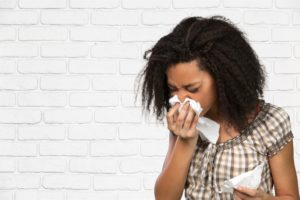 Allergens (i.e., antigens) that are commonly found in the
Allergens (i.e., antigens) that are commonly found in the 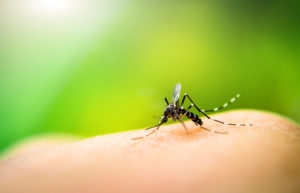 The onset of summer brings with it the menace of mosquitoes. Though we are more concerned about diseases transmitted by mosquitoes such as malaria, encephalitis, dengue fever, chikungunya, West Nile virus, yellow fever, filariasis (elephantiasis), Western equine encephalitis, Eastern equine encephalitis, Japanese encephalitis, Venezuelan equine encephalitis, St. Louis encephalitis, La Crosse encephalitis, Ross River fever, Rift Valley fever, and most recently Zika virus-related illnesses, adverse reactions to
The onset of summer brings with it the menace of mosquitoes. Though we are more concerned about diseases transmitted by mosquitoes such as malaria, encephalitis, dengue fever, chikungunya, West Nile virus, yellow fever, filariasis (elephantiasis), Western equine encephalitis, Eastern equine encephalitis, Japanese encephalitis, Venezuelan equine encephalitis, St. Louis encephalitis, La Crosse encephalitis, Ross River fever, Rift Valley fever, and most recently Zika virus-related illnesses, adverse reactions to 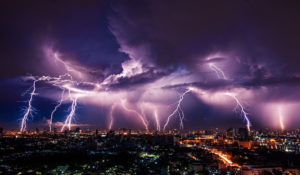 A very interesting article was published in the current issue of the Journal of Allergy and Clinical Immunology in the section “Paradigms and Perspectives.”
A very interesting article was published in the current issue of the Journal of Allergy and Clinical Immunology in the section “Paradigms and Perspectives.”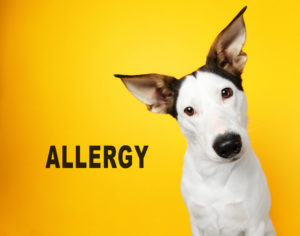 Individuals who are allergic to their pets generally have the same symptoms as people who have
Individuals who are allergic to their pets generally have the same symptoms as people who have 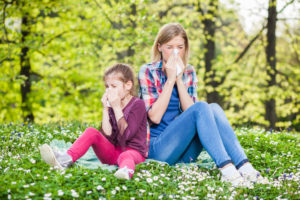 In the
In the 










